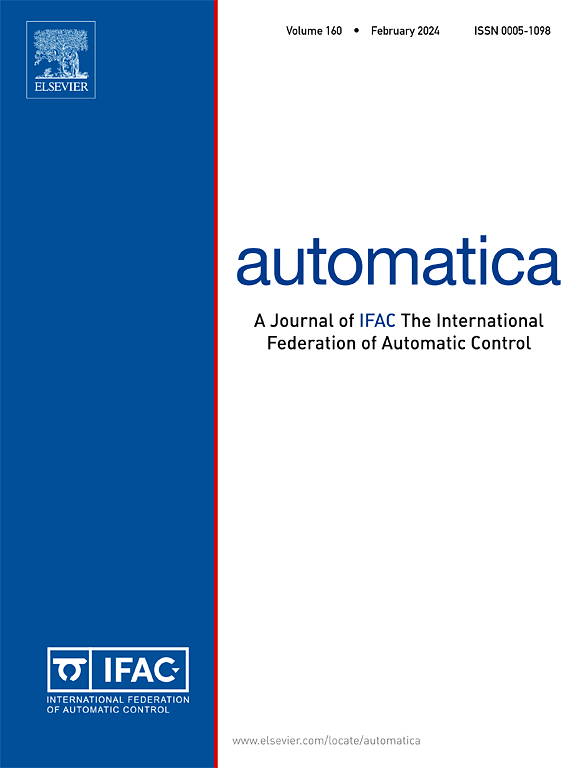Model predictive control for tracking with implicit invariant sets
IF 5.9
2区 计算机科学
Q1 AUTOMATION & CONTROL SYSTEMS
引用次数: 0
Abstract
This paper presents a model predictive control (MPC) technique for tracking with implicit terminal components. The controller formulation includes an artificial setpoint as decision variable, and the terminal constraint is defined implicitly for an augmented system that depends on the latter. In this respect, instead of computing an invariant terminal set, we consider an extended prediction horizon whose length can be bounded simply by solving LPs. This approach overcomes size-related limitations associated with the operations needed for computing invariant sets, also simplifying the offline MPC design. The proposed controller is able to drive large systems to admissible setpoints while guaranteeing recursive feasibility and convergence. Finally, the method is illustrated by an academic example, a mass–spring–damper system of variable-size and a more realistic case study of a drone.
隐式不变集跟踪的模型预测控制
提出了一种具有隐式末端分量的模型预测控制(MPC)跟踪技术。该控制器公式包括一个人工设定点作为决策变量,并隐式定义了依赖于后者的增广系统的终端约束。在这方面,我们不是计算一个不变的终端集,而是考虑一个扩展的预测视界,其长度可以简单地通过求解lp有界。这种方法克服了计算不变量集所需操作的大小限制,也简化了离线MPC设计。所提出的控制器能够在保证递归可行性和收敛性的同时,将大型系统驱动到可接受的设定值。最后,通过一个变尺寸质量-弹簧-阻尼器系统的学术实例和一个更现实的无人机案例来说明该方法。
本文章由计算机程序翻译,如有差异,请以英文原文为准。
求助全文
约1分钟内获得全文
求助全文
来源期刊

Automatica
工程技术-工程:电子与电气
CiteScore
10.70
自引率
7.80%
发文量
617
审稿时长
5 months
期刊介绍:
Automatica is a leading archival publication in the field of systems and control. The field encompasses today a broad set of areas and topics, and is thriving not only within itself but also in terms of its impact on other fields, such as communications, computers, biology, energy and economics. Since its inception in 1963, Automatica has kept abreast with the evolution of the field over the years, and has emerged as a leading publication driving the trends in the field.
After being founded in 1963, Automatica became a journal of the International Federation of Automatic Control (IFAC) in 1969. It features a characteristic blend of theoretical and applied papers of archival, lasting value, reporting cutting edge research results by authors across the globe. It features articles in distinct categories, including regular, brief and survey papers, technical communiqués, correspondence items, as well as reviews on published books of interest to the readership. It occasionally publishes special issues on emerging new topics or established mature topics of interest to a broad audience.
Automatica solicits original high-quality contributions in all the categories listed above, and in all areas of systems and control interpreted in a broad sense and evolving constantly. They may be submitted directly to a subject editor or to the Editor-in-Chief if not sure about the subject area. Editorial procedures in place assure careful, fair, and prompt handling of all submitted articles. Accepted papers appear in the journal in the shortest time feasible given production time constraints.
 求助内容:
求助内容: 应助结果提醒方式:
应助结果提醒方式:


